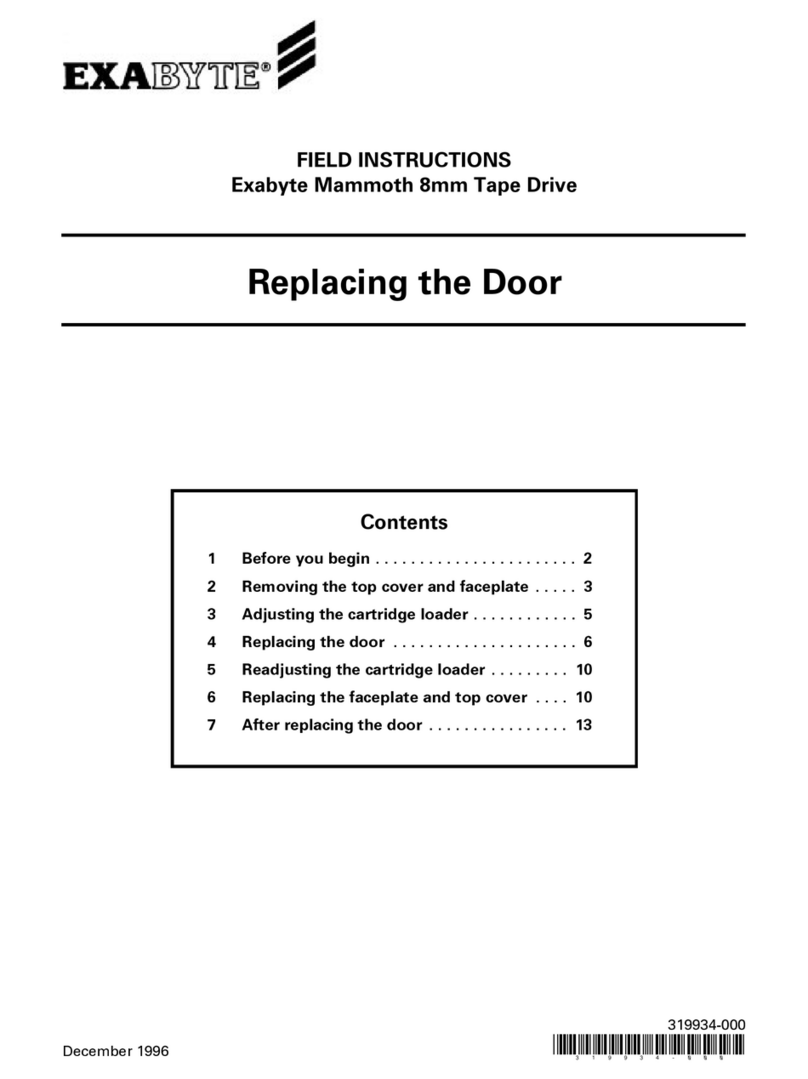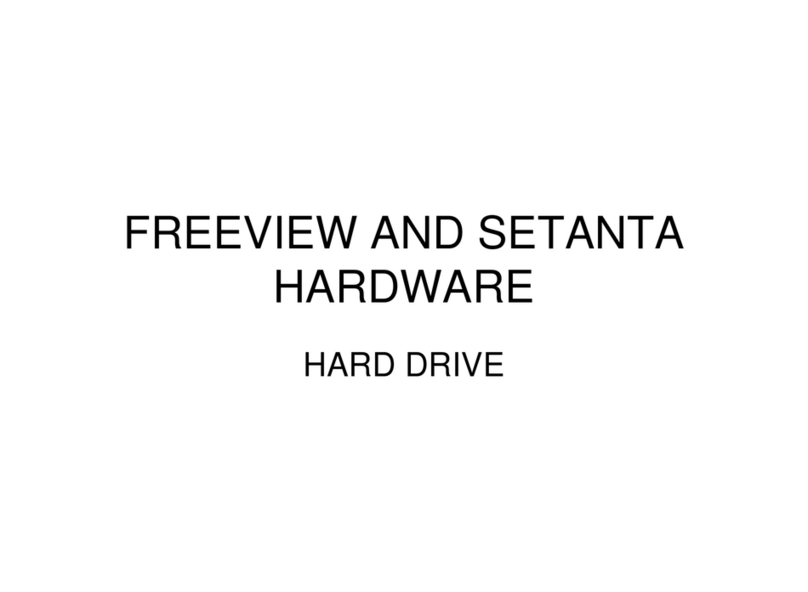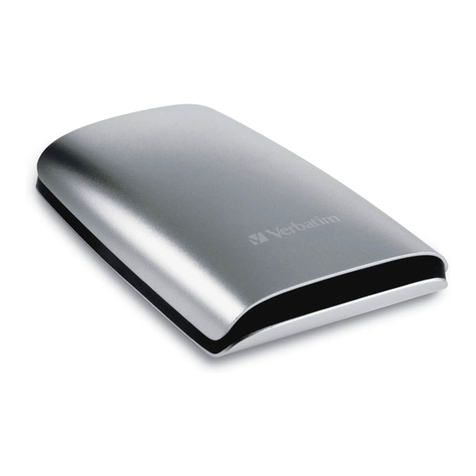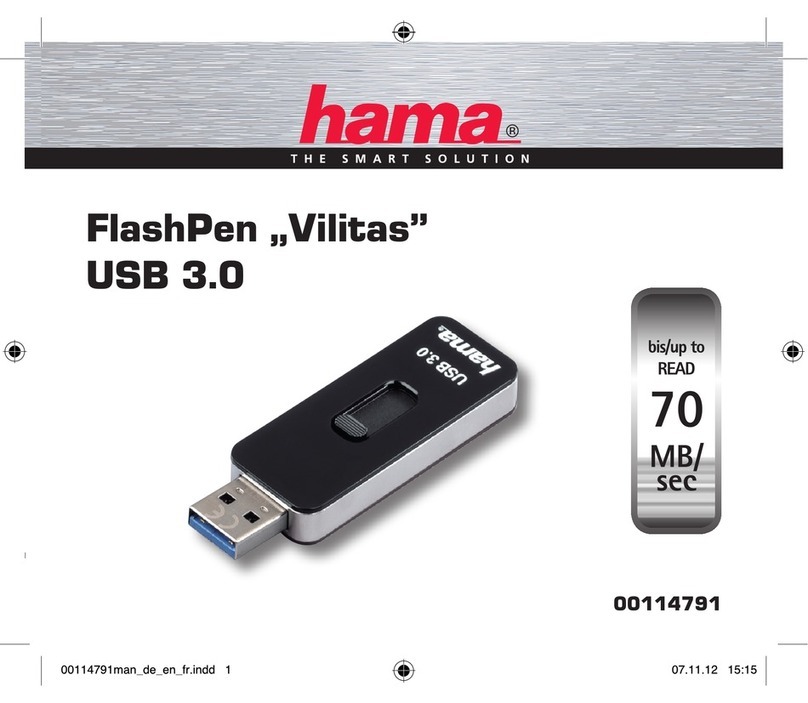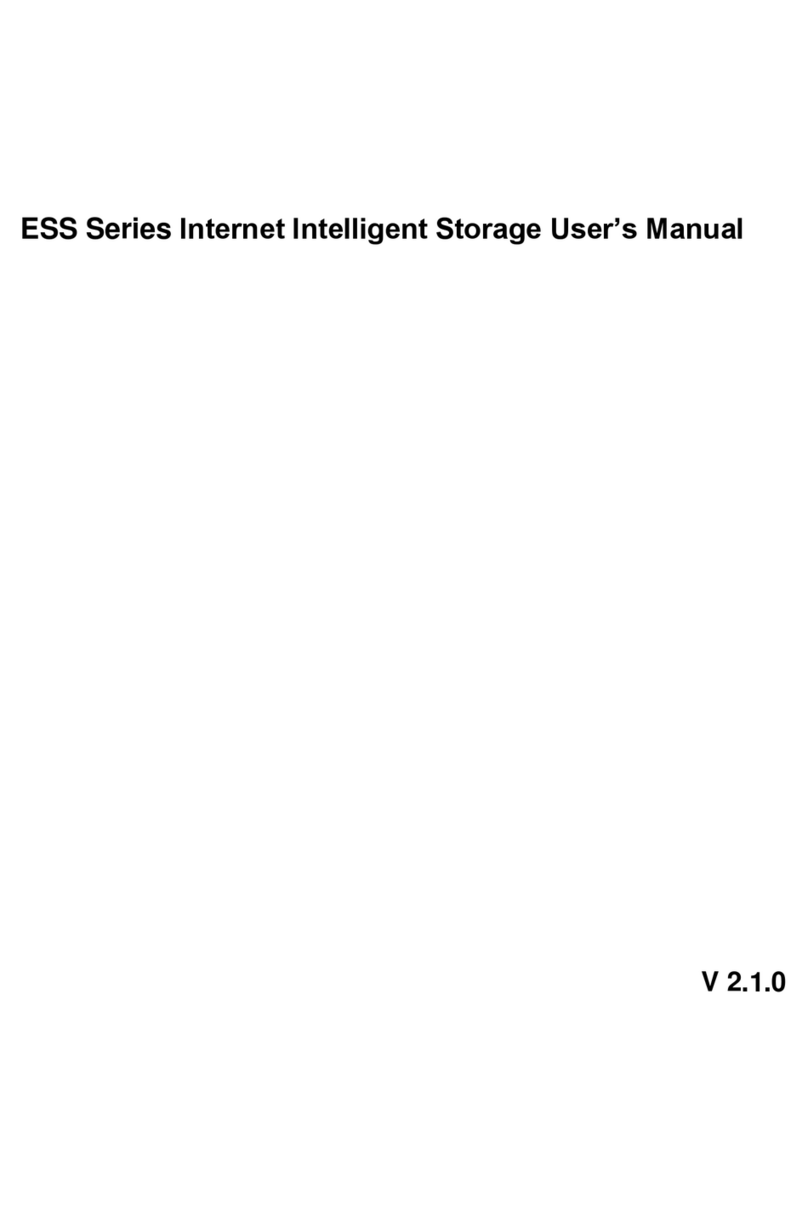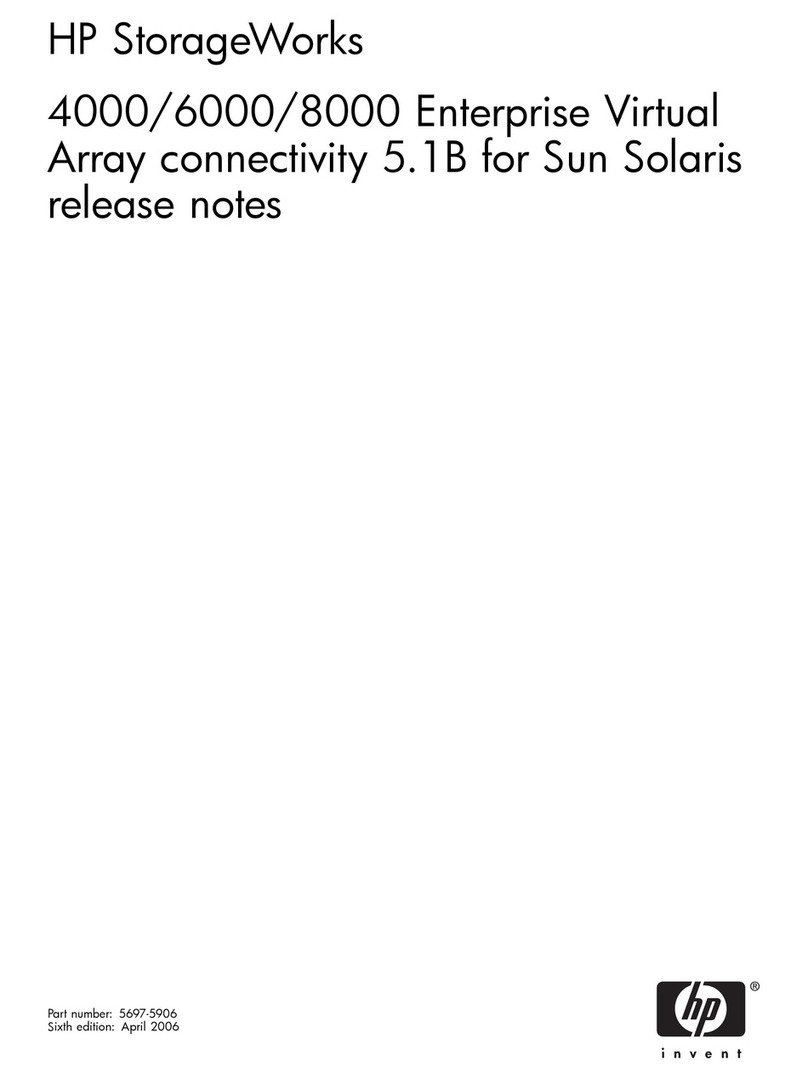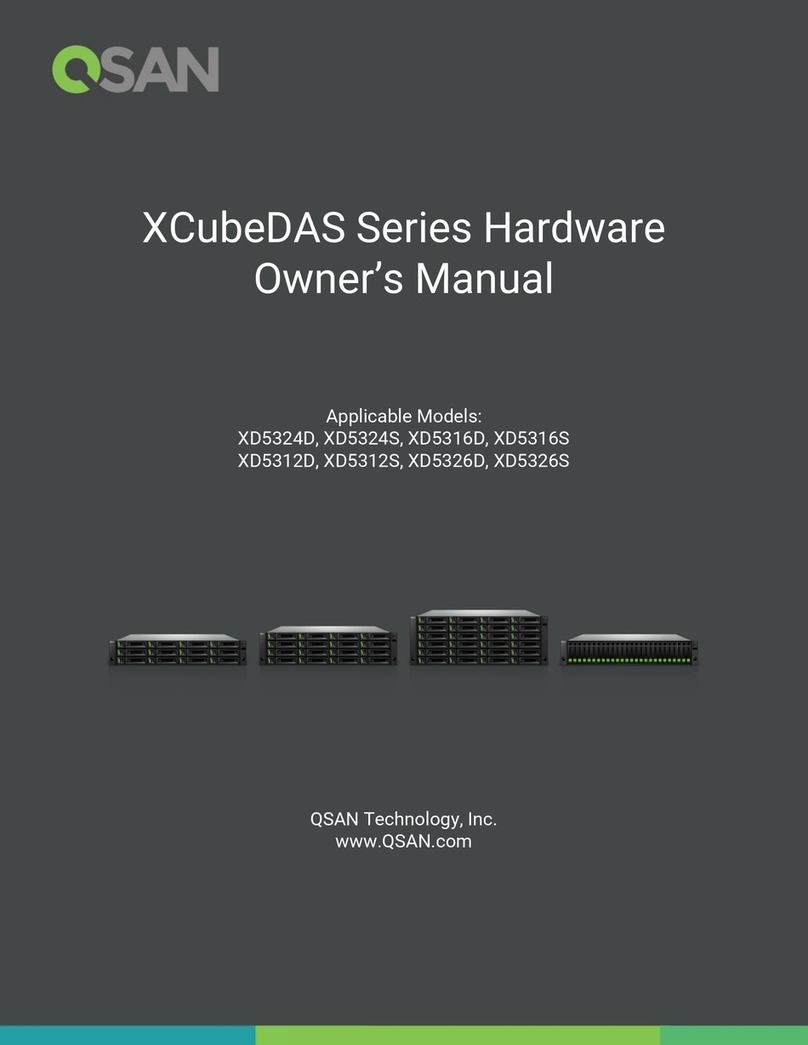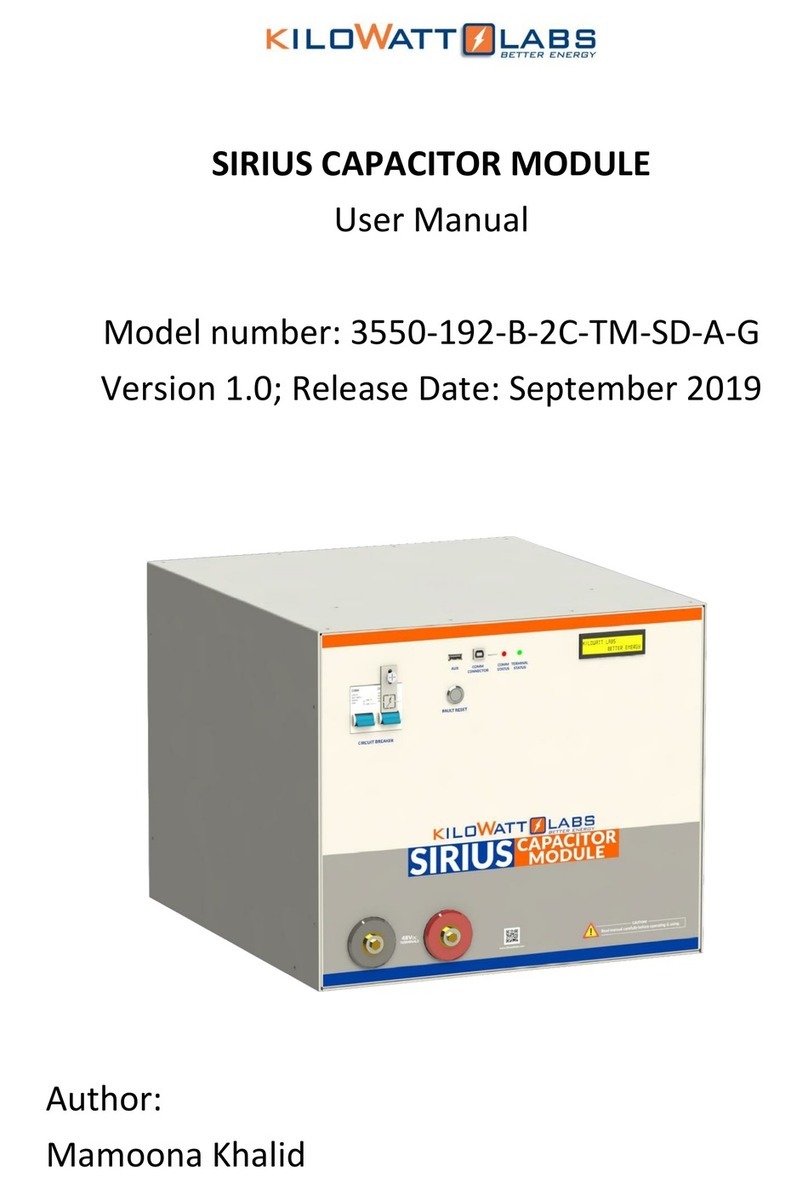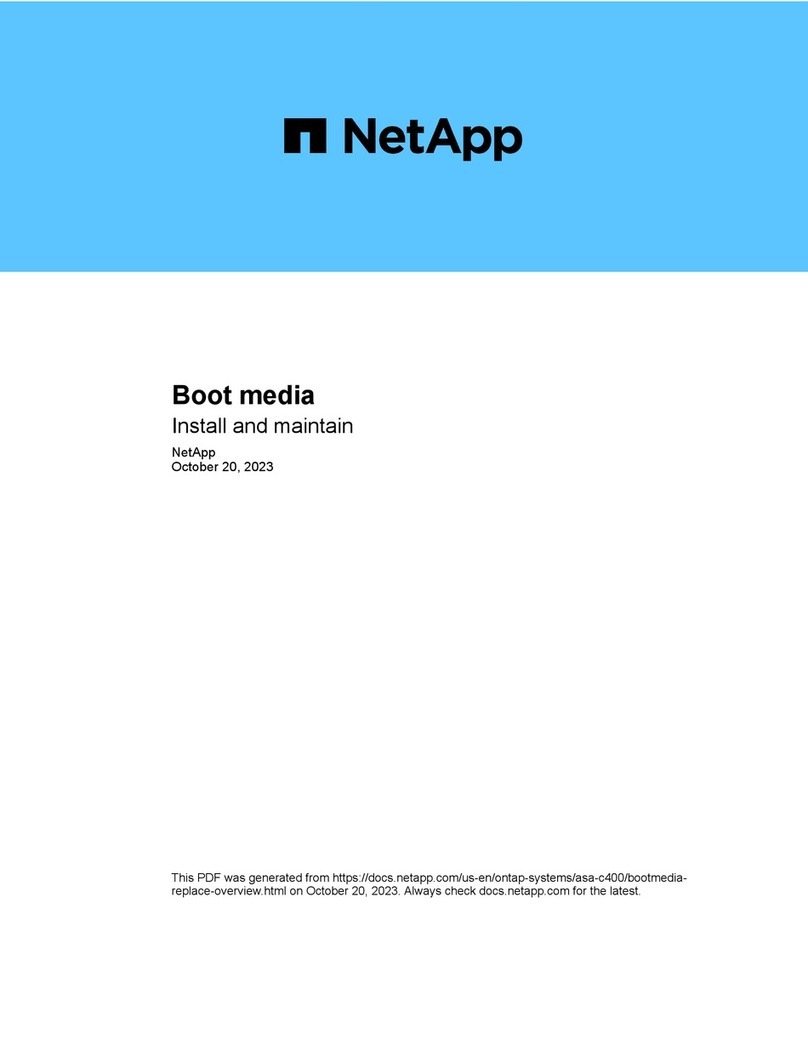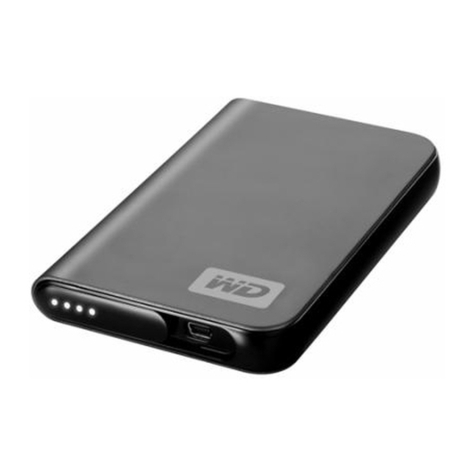Sperry Rand UNIVAC 9200 Series User manual

I
PROGRAMMEF~
REFEREN
PROCESSOR
AND
STORAGE
UP-7546
Rev.
1

This
document
contains the latest
information
available at the
time
of
publication. However, the Univac
Division
reserves
the
right
to
modify
or
revise its contents.
To
ensure
that
you
have
the most
recen~
information,
contact
your
local Univac Representative.
UN
IVAC
is
a registered trademark
of
the Sperry Rand Corporation.
©1970
, 1973 -SPERRY RAND
CORPORATION
PRINTED
IN
U.S.A.

UP-7546
Rev.
1
UP.NUMBER
Section
-
Cover/Disclaimer
PSS
Contents
1
2
3
Appendix
A -
Appendix
B
Appendix
C
Appendix
D
Index
Page
Number
1
1
thru
5
1
thru
17
1
thru
34
1
thru
21
1
thru
3
1
thru
3
1
thru
4
1
1
thru
11
Update
Level
UNIVAC
9200/920011/9300/9300
II
PROCESSOR
AND
STORAGE
PAGE
STATUS
SUMMARY
ISSUE: UP-7546
Rev.
1
Section
Page
Number Update
Level
PSS-l
PAGE
REVISION
PAGE
Section
Page
Number
Update
Level

UP-7546
Rev.
1
UNIVAC
9200/9200
11/9300/9300
II
PROCESSOR
AND
STORAGE
PAGE STATUS
SUMMARY
CONTENTS
1.
INTRODUCTION
1.1.
GENERAL
1.2.
SYSTEM
CONFIGURATION
1.1,
COMPONENT
DESCRIPTION
1.3,,1.
Processor
1.3.1.1.
Main
Storage
1.3.1.2.
Control
1.3.1.3. Arithmetic
1.3.1.3.1. Multiply,
Divide,
and
Edit
1.3.,1.3.2.
Subtraction
by
Two's
Complement
Method
1.3.1.4. Input/Output
1.3.1.4.1. Multiplexer
Channel
1.3,,1.4.2.
Selector
Channel
1.3.,2.
Printer
1.
3
..
2.1.
300
L
PM
P
ri
nt
Speed
1.3.2.2.
120
Print Positions
1.3.2.3. Print
Position
Expansion
1.3.2.4.
132
Print Positions
1.3.2.5.
Variable
Speed
Printing
1.3.2.6. 8
LPI
Print
Spacing
1.3.2.7.
Form
Alignment
1.3.2.8.
High
Speed
Numeric
Print
1.4.
DATA
FORMATS
AND
CODES
1.4.1.
Binary
Number
Representation
1.4.2.
Hexadecimal
Representation
1.4.3.
Decimal
Number
Representation
1.4.3.1.
Sign
Bits
1.4.4.
Character
Representation
1.4.5. Parity Verification
1.4.6.
OP
Codes
1.4.7.
Logical
Information
Contents
SEC
TION:
CONTENTS
1-1
1-4
1-9
1-9
1-9
1-9
1-9
1-9
1-10
1-11
1-11
1-12
1-12
1-12
1-13
1-13
1-13
1-13
1-13
1-13
1-13
1-14
1-15
1-15
1-16
1-16
1-17
1-17
1-17
1-17
1
P
AGE:

UP-7546
Rev. 1
UNIVAC
9200/9200
11/9300/9300
II
PROCESSOR
AND
STORAGE
2.
PROCESSOR
UNIT
2.1.
MAIN
STORAGE
2.1.1. Privileged
and
Low
Order
Storage
2.1.2.
Storage
Boundaries
2.1.3. Parity
Checking
2.1.4.
Interrupts
2.2.
PROCESSOR
CONTROL
2.2.1.
Program
State
Control
2.2.1.1.
Processor
Program
State
Control
Words
(Bytes 0-3)
2.2.1.2. Input/Output
Program
State
Control
Word
(Bytes
16-19)
2.2.2.
Restricted
Alter/Display
and
Operator
Request
(Bytes
4,5)
2.2.3.
Machine
Instruction
Register
(Bytes
6-11)
2.2.4.
Restart
Instruction
Register
(Bytes
22-25)
2.2.5.
Spec
i
al
Statu
s
(Bytes
29-31)
2.2.6.
Processor
Program
Register
(Bytes
32-47)
and
Input/Output
Program
Registers
(Bytes
48-63)
2.2.7.
Device
Status
(Byte
66)
and
Device
Address
(Byte
67)
2.2.8.
Buffer
Control
Words
(Bytes
68-127)
2.2.8.1. Multiplexer
Subchannel
BCW
2.2.8.2.
Device
Control
Subchannel
Numbering
2.2.8.3.
Buffer
Control
Word
Location
2.2.8.4. Additional
Nonshared
Subchannel
Device
Addresses
2.2.9. Printer
Image
Area
(Bytes
128-259)
2.2.10.
Printer
Control
2.2.10.1. P
ri
nter
Instru
ctions
2.2.10.2. Printer
Buffer
Control
Word
2.2.10.3.
Issue
and
Execute
2.2.10.4.
status
Register
2.2.10.5.
Interrupt
Requests
2.2.10.6. Printer
Status
Byte
2.2.11. Input/Output
Control
2.2.12.
Operator-Ini
tiated
Functions
2.2.12.1.
Load
Cycle
2.2.12.2.
Alternate
Execute
and
Staticize
Cycle
2.3.
MUL
TIPLEXER
CHANNEL
CONTROL
2.3.1.
Multiplexer
Channel
Instructions
2.3.2. Multiplexer
Channel
Buffer
Control
Word
2.3.3. Multiplexer
Channel
Status
Byte
2.3.4.
Condition
Code
2.3.5.
Alternate
BCW
Format
2.3.5.1.
Data
Di
rection
Control
2.3.6. Polling
2.3.6.1. Priority
of
Interrupt
2.3.7.
Special
Channel
Instructions
and
Interrupts
2.3.7.1.
Operator
Interrupt
2.3.7.2.
Alternate
(L
T)
Summary
Interrupt
2.3.7.3.
One-Second
Interrupt
2.3.7.4.
Summary
of
Special
Channel
Instructions
2.3.8.
Channel
Checking
2.3.8.1.
Interface
Error
FI
ip-Flop
2.3.8.2.
Device
Address
Parity
2.3.8.3. Parity
Error
Flip-Flop
Contents
SECTION:
2-1
2-1
2-2
2-3
2-3
2-4
2-6
2-6
2-7
2-7
2-7
2-8
2-8
2-8
2-8
2-8
2-9
2-9
2-9
2-9
2-10
2-10
2-10
2-10
2-11
2-12
2-12
2-13
2-13
2-14
2-15
2-15
2-15
2-15
2-16
2-16
2-17
2-17
2-18
2-19
2-19
2-20
2-20
2-20
2-21
2-21
2-21
2-22
2-22
2-22
2-22
2
P
.A;GE:

UP-7546
Rev.
1
UNIVAC
9200/9200
11/9300/9300 II
PROCESSOR
AND
STORAGE
2.4.
SELECTOR
CHANNEL
CONTROL
2.4.1.
Channel
Addressing
2.4.1.1.
Selector
Channel
Address
Format
2.4.1.2.
Mu
Itip
lexer
Channel
Address
Format
2.4.2.
Processor
Lock-Out
2.4.3.
Concurrent
Operations
2.4.4.
Command
Chaining
2.4.!J.
Execute
I/O
and
Test
I/O
Instructions
2.4.6.
I/O
Commands
2.4.7.
Transfer-in-Channel
(TIC)
Command
2.4.8.
Condition
Code
(CC)
2.4.9.
Channel
Address
Word
(CAW)
and
Diagnostic
Interrupt
2.4.10.
Channel
Command
Word
(CCW)
2.4.11.
Device
Status
2.4.12.
Channel
Status
Word
(CSW)
2.4.13.
Channel
Check
i
ng
2.4.14.
Special
Selector
Channel
Instructions
2.5.
DATA
TRANSLATION
2.5.1.
Card
Code
Translation
(SO-Column
Card)
2.5.1.1.
Card
Code
Image
Mode
(SO-Column
Card)
2.5.2.
Card
Code
Translation
(90-Column
Card)
2.5,2.1.
Card
Code
Image
Mode
(90-Column
Card)
2.5.3.
Internal
Codes
3.
INSTRUCTIONS
3.1.
GENERAL
3.2.
INSTRUCTION
FORMAT
3.2.1.
Register
and
Indexed
Storage
Operation
(RX)
3.2.2.
Storage
and
Immediate
Operand
Operation
(SI)
3.2.3.
Storage-to-Storage
(SS1)
3.2.4.
Storage-to-Storage
(SS2)
3.3.
INSTRUCTION
REPERTOIRE
3.3.1.
Binary
Instructions
and
Overflow
3.3.1..1.
Store
Halfword
Instruction
(STH)
3.3.1.2.
Load
Halfword
Instruction
(LH)
3.3.1.3.
Compare
Halfword
Instruction
(CH)
3.3.1.4.
Add
Immediate
Instruction (AI)
3.3.1.5.
Add
Halfword
Instruction
(AH)
3.3.1.6.
Subtract
Halfword
Instruction
(SH)
3.3.2.
Logical Instructions
3.3.2.1.
Test
Under
Mask
Instruction
(TM)
3.3.2.2.
Move
Immediate
Instructions
(MVI)
3.3.2.3.
AND
Immediate
Instruction
(NI)
3.3.2.4.
Compare
Logical
Immediate
Instruction (CLI)
3.3.2.5.
OR
Immediate
Instruction
(01)
3.3.2.6.
Halt
and
Proceed
Instruction
(HPR)
3.3.2.7.
Move
Numeric
Instruction
(MVN)
3.3.2.S.
Move
Character
Instruction
(MVC)
3.3.2.9.
AND
Character
Instruction
(NC)
3.3.2.10.
Compare
Logical
Character
Instruction
(CLC)
3.3.2.11.
0R
Character
Instructi
on
(0
C)
Contents
SECTION:
2-23
2-23
2-23
2-23
2-23
2-24
2-24
2-24
2-25
2-25
2-26
2-26
2-27
2-2S
2-30
2-30
2-31
2-31
2-31
2-32
2-33
2-34
2-34
3-1
3-6
3-6
3-6
3-6
3-7
3-7
3-S
3-9
3-9
3-9
3-9
3-10
3-10
3-10
3-10
3-10
3-10
3-10
3-11
3-11
3-11
3-11
3-11
3-11
3-12
3
PA
G
E:

Rev.
1
UNIVAC
9200/9200
11/9300/9300 II
PROCESSOR AND STORAGE
Contents
SECTION:
4
PAGE:
UP-7546L
----------------------------------~~--------~----------~-----------
3.3.2.12. Translate Instruction
(TR)
3.3.2.13. Edit Instruction
(ED)
3.3.3.
Decimal
Instructions
3.3.3.1.
Move
with
Offset
Instruction
(MVO)
3.3.3.2.
Pack
Instruction
(PACK)
3.3.3.3.
Unpack
Instruction
(U
N
PK)
3.3.3.4.
Zero
Add
(Packed)
Decimal
Instruction
(ZAP)
3.3.3.5.
Compare
(Packed)
Decimal
Instruction
(CP)
3.3.3.6.
ADD
(Packed)
Decimal
Instruction
(AP)
3.3.3.7.
Subtract
(Packed)
Decimal
Instruction
(SP)
3.3.3.8. Multiply
(Packed)
Decimal
Instruction
(MP)
3.3.3.9.
Divide
(Packed)
Decimal
Instruction
(DP)
3.3.4.
Bran
ch
Instructi
on
s
3.3.4.1.
Branch-on-Condition
Instruction
(BC)
3.3.4.2.
Branch
and
Link Instruction (BAL)
3.3.5.
State
Control
(Privileged
and
Special)
Instructions
3.3.5.1.
Load
Program
State
Control
Instruction
(LPSC)
3.3.5.2.
Store
Program
State
Control
Instruction
(SPSC)
3.3.5.3.
Supervisor
Request
Call
Instruction
(SRC)
3.3.6. Input/Output Instruction
3.3.6.1.
Execute
I/O Instruction
(XIO
F)
3.3.6.2.
Test
I/O Instruction
(TID)
APPENDIXES
A,
INSTRUCTIONS,
FORMATS, CODES
B.
HEXADECIMAL
TABLES
C.
CHARACTER
GRAPHIC
SET CODES AND
PRINTER
SYNCHRONIZER
CODE
D.
POWERS
OF
2;
POWERS OF
16
INDEX
TABLES
1-1.
Configurations
for
UNIVAC
9200
and
9300
Systems
Processors
1-2.
Hexadecimal-Decimal
Conversion
3-1. Instruction
Mnemonics
in
Alphabetical
Sequence
3-2. Instructions
Grouped
by
Functional
Type
3-3. Instructions
Grouped
by
Format
3-4. Instructions
in
Sequence
of
Hexadecimal
Codes
3-12
3-12
3-13
3-13
3-14
3-15
3-15
3-15
3-15
3-16
3-16
3-18
3-20
3-20
3-20
3-20
3-20
3-21
3-21
3-21
3-21
3-21
1-4
1-15
3-2
3-3
3-4
3-5

UP-7546
Rev.
1
FIGURES
1--1.
1--
2.
1-3.
1--4.
1-5.
1--6.
2-1.
2--2.
2--3.
2--4.
2
--5.
2--6.
3--1.
UNIVAC
9200/9200
11/9300/9300
II
PROCESSOR
AND
STORAGE
UNIVAC
9200/9200
11/9300/9300
II
Systems
Processor
UN
IV
AC
9200/9200
11/9300/9300
II
Systems
Processor
Block
0
iagram
Configuration
for
UNIVAC
9200
System
Processor
Configuration
for
UNIVAC
9200
II
System
Processor
Configuration
for
UNIVAC
9300
System
Processor
Configuration
for
UNIVAC
9300
II
System
Pr,ocessor
Main
Slo
rag
e 0rg
ani
zat
ion
Organization
of
First
260
Bytes
of
Storage
Compressed
Code
for
80-Column
Card
Image
Mode
for
80-Column
Card
Card
Code
Tran.slation
for
90-Column
Card
Image
Mode
for
90-Column
Card
Instruction
Formats
Contents
5
SECTION:
P
AG
E:
1-1
1-2
1-5
1-6
1-7
1-8
2-2
2-5
2-32
2-33
2-33
2-34
3-7

UP-7546
Rev.
1
UNIVAC
9200/9200
11/9300/9300
II
I 1 I
____
P_R_O_C_E_SS_O_R_A_N_D_S_T_O_R_A_G_E
_____
~
____
~~.~~
1.
INTRODUCTION
Figure
1-1.
UNIVAC
9200/9200
1//9300/9300
/I
Systems
Processor
1.1.
GENERAL
This
document
contains
a
description
of
the
UNIVAC
9200/9200
11/9300/9300
II
Systems
processor
with
optional
features
pertaining
to
expans
ion,
internal
operation
of
the
processor,
data
and
program
information
presentation,
instruction
repertoire
and
coding,
and
constant
and
s1torage
definitions.
It
should
be
noted
that
only
one
processor
is
detailed
herein
with
the
specific
differences
between
each
noted
as
required.
The
four
system
processors
are
identic
all
in
appearance.
The
configuration
is
shown
in
Figure
1-1.
This
manual
is
divided
into
the
following
basic
sections:
•
Introduction
•
Processor
Unit
•
Instructions
•
Appendix
The
appendix
contains
tables,
charts,
and
diagrams
as
a
convenience
to
the
programmer
and
field
engineer.
The
fact
that
many
examples
and
explanations
are
given
in
terms
of
punched
card
input
does
not
imply
that
any
other
of
the
usual
input
methods
may
not
be
used.

Upa'7546
Rev.
1 1
L UNIVAC
9200/9200
11/9300/9300
II
PROCESSOR AND STORAGE
SECTION:
PAGE:
The
UNIV
AC
9200/9200
11/9300/9300
II
Systems
processor
shown
in
Figure
1--1,
is
a
byte-oriented
data
processor
integrated
with
an
attached
printer
and
an
optional
externally-connected
card
punch
and
card
reader
(basic
peripherals).
A
wide
range
of
other
peripheral
devices
may
be
incorporated
either
initially
by
replacing
one
or
more
of
these
basic
peripheral
devices,
or
later,
by
adding
to
the
system.
Two
major
functions
of
the
processor
are
decoding
and
storage.
The
decoding
func-
tion
analyzes
each
instruction
to
determine
required
operations
and
the
location
of
needed
information.
An
instruction
containing
labels
of
data
in
storage
is
decoded
to
find
the
addresses
and
lengths
of
the
operands
(data
to
be
processed),
as
well
as
the
particular
operation
that
is
to
be
performed
on
the
data.
The
processor
then
re-
sponds
to
the
instruction
by
using
generated
control
signals.
The
storage
(memory)
portion
of
the
processor
stores
the
data
and
instructions
required
by
the
program
in
addressable
locations
that
are
easily
accessible
to
the
program.
The
major
components
of
the
UNIV
AC
9200/9200
11/9300/9300
II
Systems
processor
are
shown
in
Figure
1-2.
CONTROL
TO
I/O
DEVICE
DATA
AND
STATUS
FROM
I/O
DEV
ICE
~
....---
r----------,
I
STORAGE
PLATED:
ADR I
I
UNIT
I
STORAGE
WIRE I
S.
~
ADDR
ESS
I
~
STORAGE I REG.
BUFFER
r-
- - -
-'-
- - - I
I STOR.
DATA
REG. I
(MA)
L_
-
~
--1--
:....J
INTERNAL
INPUT
DATA
STORAG
E
OUTPUT
AND
~
REGISTER
r-O+-
ADRS.REG.
MULTIPLEXER
~
CHANNEL
(D
REG)
(MAREG)
SYNCHRONIZERS
~
TEMPORARY
FUNCTION
DATA
STORAGE
....
REGISTER
REG_
(F
REG)
(D
REG)
~
l
ADDER FUNCTION
INPUT
NETWORK
r+-
DECODE
(ACX)
TABLE
~
---y
~
ADDER AND SEQUENCE
-
PARITY
COUNTER A
GENERATOR
(SA
CTR)
~
SEQUENCE
-COUNTER B
(SB
CTR)
Figure
1-2.
UNIVAC
9200/9200
1//9300/9300
/I
Systems
Processor
Block
Diogrom
-
CONTROL
TO
ALL
COMPONENT
f
~
FUNCTION
CONTROL
FF'S
~
AND GATING
S
2

UP-7546
Rev.
1
UNIVAC
9200/9200
11/9300/9300
II
I 1
1-
,________
P_R_O
__
C_E_S_S_O_R
__
A_N
__
D_S_T
__
O_R_A_G
__E__________
~
___________
~~~~
They
are
controlled
and
coordinated
by
means
of
internally
stored
programs
which
are
derived
from a
standard
instruction
repertoire.
The
function
of
each
of
the
com
po-
nents
is
as
follows:
•
Storage
Unit
-
Comprises
registers
used
in
the
processing
and
storage
of
all
instructions
and
data
that
is
to
be,
or
has
been,
processed.
•
Data
Register
(D
Reg)
•
Temporary
Data
Storage
Register
(B
Reg)
•
Adder
Input
Network
(ACX)
•
Adder
and
Parity
Generator
Provides
temporary
storage
for
data
that
is
currently
being
processed.
All
tran
sfer
of
data
between
the
proc
essor
or
peripheral
units
and
the
storage
unit
is
accomplished
through
the
data
register.
Provides
additional
temporary
storage
for
data
currently
being
processed,
an
d
also
for
various
special
codes
required
for
process
control
and
addressing.
-
Gates,
modifies,
and
generates
data
involved
in
processing
program
data
or
special
control
codes.
-
Performs
various
processes
specified
by
the
instructions,
such
as
addition,
subtraction,
and
the
formation
of
AN
D-
and
OR-
products.
Also
generates
parity.
•
Storage
(Memory)
-
Addresses
of
data
being
processed.
Address
Buffer
(MA)
•
Storage
(Memory)
-
Stores
the
addresses
of
data
currently
being
processed.
Address
Register
(MA
Reg)
•
Function
Register
-
Stores
the
partial
decoded
function
code
specified
in
an
(F
Reg)
instruction.
•
Function
Decode
Table
•
Sequence
Counters
A
and
B
(SA
CTR,
SB
CTR)
•
Function
Control
Flip-flops
and
Gating
-
Interprets
instructions
and
generates
the
control
signals
required
for
the
initiation
of
the
required
process.
-
Controls
sequencing
of
the
various
control
signals
required
to
complete
a
process
specified
by
an
instruction.
Although
outputs
of
both
counters
control
the
generating
of
funct,ion
signals,
sequence
counter
A
is
used
as
a
first-stage
input
to
the
second-stage
sequence
counter
B.
-
Contains
all
of
the
secondary
storage
and
gating
circuitry
for
generation
of
the
control
signals
necessary
to
initiate
the
various
subfunctions
of
a
specified
process.

UP-7546L
Rev.
1
----------- -
UNIVAC
9200/9200
11/9300/9300
II
PROCESSOR AND STORAGE
1.2.
SYSTEM
CONFIGURATION
The
UNIVAC
9200/9200
11/9300/9300
II
Systems
processor
is
housed
in
two
separate
cabinets.
The
larger
of
the
two
cabinets
con
tains
an
operator's
control
panel,
a
printer,
and
the
integrated
logic
circuit
packages.
The
second
cabinet
is
the
elec-
tronics
cabinet;
it
contains
the
storage
(memory)
circuitry
and
the
power
supplies
and
power
distribution
panel
for
the
entire
processor.
Table
1-1
lists
the
basic
and
optional
processor
equipment
for
each
of
the
four
systems
(UNIV
AC
9200,
9200
II,
9300,
9300
II).
Figures
1-3, 1-4, 1-5,
and
1-6
illustrate
the
system
configurations
for
these
systems.
UNIVAC
SYSTEMS
9200
9200
II
Printer
Processor
Printer
Processor
o
Control
o
Printer
o
Form
control
loop
o
250
lPM
bar
printer
96
print
positions
63
char
acter
pr
int
bar
o ElK-byte
storage
Expandab
Ie
to
16K
byte
1.2
Ilsec.
cycle
time
o
J~rithmeticControl
Control
for
printer,
punch,
and
reader
Multiplexer
channel;
accesses
up
to
8
sub-
5,ystems or
another
processor
Multiply,
divide,
edit
s
2;00
lPM
print
speed
120
print
pOSitions
Print
position
expansio
132
print
pOSitions
Variable
speed
printing
8
lPI
print
spacing
Form
aI
ignment
n
--
LEGEND:
0
0
0
0
0
0
0
*
*
t
I
t
t
t
r
t
o
Basic
Equipment
Control
Printer
Form
control
loop
250
lPM
bar
printer
96
print
positions
63
character
print
bar
8K-byte
storage
Expandab
Ie
to
32K
bytes
1.2
Ilsec.
cycle
time
Ar
Ithmet
icC
ontro
I
Control
for
printer,
punch,
and
reader
Multiplexer
channel;
accesses
up
to
8
sub-
systems
or
another
processor
Multiply,
divide,
edit
Se
lector
c hanne I
300
lPM
print
speed
120
print
pOSitions
Print
pOSition
expansion
132
print
pOSitions
Variable
speed
printing
8lPI
print
spacing
Form
alignment
*
Processor
Optional
Features
Printer
Optional
Features
PROCESSORS
9300
9300
II
Printer
Processor
Printer
Processor
0
Control
0
Control
0
Printer
0
Printer
0
Form
control
loop
0
Form
control
loop
0
600
lPM
bar
printer
0
600
lPM
bar
printer
120
print
pOSitions
120
print
pOSitions
63
character
print
bar
63
character
print
bar
0
8K-byte
storage
0
16K-byte
storage
Expandab
Ie
to
32K
bytes
EXpandable
to
32K
bytes
0.6Ilsec.
cycle
time
0.6
Iisec.
cycle
time
0
Ar
ithmetic
Control
0
Ar
it
hmet ic
/C
ontro
I
Control
for
printer,
Control
for
printer,
punch,
and
reader
punch,
and
reader
*
Multiplexer
channel;
0
Multiplexer
channel;
accesses
up
to
8
sub-
accesses
up
to
8
sub-
sys
te
ms
or
another
systems
or
another
processor
processor
0
Multiply,
div
ide,
ed
it
0
Multiply,
divide,
edit
0
Se
lec
tor
c hanne I
t
Print
position
expansion
t
Print
position
expansion
I
High
speed
numeric
print
t
High
speed
numeric
print
I 8
lPI
print
spacing
r 8
lPI
print
spacing
Table
7-
7.
Configurations
for
UNIVAC
9200
and
9300
Systems
Processors
4

UP-7546
Rev.
1
UNIVAC
9200/9200
11/9300/9300
II
PROCESSOR AND STORAGE
,--------------------------------------~----------
~--
UNIVAC
9200
SYSTEM
PROCESSOR
9200
PR
OC
ESS
OR
3030-00
PR
INTER
AND
PH
INTER
CONTROL
250
LF'M
96
PRINT POSITIONS
63··CHARACTER PRINT BAR
FOfIMS
CONTROL LOOP
LEGEND:
C==J
BASIC
EQUIPMENT
CARD
READER.
CONTROL
CARD
,-
MULTIPLY;--
DIVI
DE/
EDIT
F0882-00
MUL
TIPLEXER
I
I/O
CHANNEL
I
L
__
~8~-~_
1-
-
-:
PROCESSOR
OPTIONAL
FEATURES
!.._-_.'
PRINTER
OPTIONAL
FEATURES
NOTIE:
ALL
HARDWARE AND
FEATURE
NUMBERS
SHOWN
APPLY
TO
EQUIPMENT
FOR 60Hz
OPERATION.
COUNTERPARTS
ARE
AVAILABLE
FOR 50Hz
OPERATION.
I
I
---l
ND
OR
8K
BYTE
STORAGE
1.2 pSEC
-----.,.----,
I I
4
K.
B YTE
14K
B
VT
E I
STORAGE:
STORAGE I
EXPANSION I EXPANSIONI
1.2pSEC I
l.2pSEC
:
I I
: I
1.--_7_00_7_-9_3---1_
~~8':'0::8_L!
~:~::7J
r-----,
-
--
-
--,
12K
BYTE
STORAGE
1.2pSEC
I
I
4K
BYTE
I
STORAGE I
EXPANSION I
. I
1.2 pSEC I
I
I
I
,--_7_00_7_-9_2~_
~1~0'::6J
OR
16K
BYTE
STORAGE
1.2 pSEC
7007-91
Figure
1-3.
Configuration
for
UNIVAC
9200
System
Processor

UP-7S46~
Rev.
1
---
UNIVAC
9200/9200
11/9300/9300 "
PROCESSOR
AND
STORAGE 1
SECTION:
UNIVAC
9200
II
SYSTEM
PROCESSOR
--------------_._---------
9200 II
PR
OC
ESSOR
3030-94 8K B
YT
E
STORAGE
1.2
flSEC
--
--1--
--,
I 1
4K
BYTE
4K
BYTE
I
I-AND
,...--
STORAGE
I
STORAGE
I
EXPANSION:
EXPANSION I
1.2
fl
SEC
I
1.21
1SEC
I
----------------~---~
PR
INTER
AND
PRINTER
CONTROL
LEGEND:
c=J
BASIC
EQUIPMENT
CARD
READER.
CONTROL
r---------
I
MULTIPLY
/
DIVIDE,'
:
EDIT
I
F0882-00
MUL
TIPLEXER
I/O
C
HANNE
L
SELECTOR
CHANNEL
DUAL
I/O
C
HANNE
L
F1104-99
I
~--------
______
I
:
____
J PROCESSOR OPTIONAL FEATURES
C::J
PRINTER
OPTIONAL
FEATURES
NOTE:
ALL
HARDWARE
AND
FEATURE
NUMBERS
SHOWN
APPLY
TO
EQUIPMENT
FOR
60Hz
OPERATION.
COUNTERPARTS
ARE
AVAILABLE
FOR 50Hz
OPERATION.
OR
OR
FIRST 1 SECOND 1
EXPANSION IEXPANSION I
I I
,-_70_0_7-_93---,
!~9~9~
LF~890-:':
J
12K
BYTE
STORAGE
1.2 flSEC
----r---l
4K
BYTE
116K
BYTE
1
STORAGE
I
STORAGE
I
EXPANSION IEXPANSION I
1.2
fl
SEC
1
1.2
fl
SEC
I
I I
FIRST I
SECOND
I
EXPANSION IEXPANSION I
: I
'--_70_0_7-_92----J
~0890-96_1~0890-9~
16K
BYT
E
STORAGE
1.2
flSEC
-----,
16K
BYTE
II
STORAGE
EXPANSION I
-
1.2
flSEC :
OR
OR
I
I
L--7_0_0_7
-_9_1
-'
._F
~90-~
J
--I
24K
BYTE
8K
BYTE
I
STORAGE
STORAGE
I
1.2
flSEC
EXPANSION I
1.2 flSEC I
I
I
I
7007-87
F0890-93
I
L--
__
---'
____
.J
32K
BYTE
STORAGE
1.2 flSEC
7007-85
Figure
7
-4.
Configuration
for
UNIVAC
9200
If
System
Processor

UP-7546
Rev. 1 UNIVAC
9200/9200
11/9300/9300
II
PROCESSOR AND STORAGE
,----------------------------------------~----------
~~-.
UNIVAC
9300
SYSTEM
PROCESSOR
PR
INTER
AND
PRINTER
CONTROL
9300 PROCESSOR
3030-02
CARD
READER.
CONTROL
600
LPN!
120
PRINT POSITIONS CARD
63-CHA,R,A.CTER PRINT BARS •
PUNCH
FORMS
CONTROL LOOP CONTROL
MULTIPLY/
DIVIDE/
EDIT
~------~--------------~
LEGEND:
C]
BASIC
EQUIPMENT
[==~~~~
PROCESSOR
OPTIONAL
FEATURES
PRINTER
OPTIONAL
FEATURES
MULTIPLEXER
I/O
CHANNEL
NOTE:
ALL
HARDWARE AND
FEATURE
NUMBERS
SHOWN
APPLY
TO
EQUIPMENT
FOR
60Hz
OPERATION.
COUNTERPARTS
ARE
AVAILABLE
FOR
50Hz
OPERATION.
OR
OR
OR
OR
8K
BYTE
STORAGE
0.6/lSEC
----r----l
4K
BYTE'
4K
BYTE
I
STORAGE
I
STORAGE
I
EXPANSION IEXPANSION I
0.6/lSEC I 0.6/lSEC I
FIRST I
SECOND
:
EXPANSION: EXPANSION I
L..-_700_7_-08_.J~
~9~0:"
LF
~8~-~
J
12K
BYTE
STORAG E
0.6/lSEC
7007-10
-----r-
---
r---l
4K
BYTE
I 8K
BYTE
I 8K
BYTE
I
STORAGE I
STORAGE
1 STORAGE I
EXPANSION IEXPANSION I EXPANSION I
0:6/lSEC I 0.6/lSEC I 0.6/lSEC I
I
FIRST
I SECOND I
THIRD
I
EXPANSION IEXPANSION IEXPANSION I
I I I
F0890-92 I F0890-05 I
F0890-06
I
L..-
__
--'_
- -
-,-
--
--
----7
16K
BYTE
STORAGE
0.6/lSEC
----1
16K
BYTE
I
STORAGE
I
EXPANSION I
0.6/lSEC I
I
I
I
L..-7_0_07_-_12--,
~
~~~
J
24K
BYTE
STORAGE
0.6/lSEC
----l
8K
BYTE
I
STORAGE
I
EXPANSION
0.6/lSEC I
I
I
I
L-_70_0_7-_18-.J
~
O~~:J
32K
BYTE
STORAGE
0.6/lSEC
7007-14
" ""
OR
/
'r----(
I 16K BYTE. I
I
STORAGE
I
I
EXPANSION I
I 0.6/lSEC I
I SECOND I
IEXPANSION I
I I
I
F0890-02
I
L.
____
.J
Figure
1-5.
Configuration
for
UNIVAC
9300
System
Processor

UP-7S46~
Rev.
1
------
UNIVAC
9200/9200 11/9300/9300 II
PROCESSOR AND STORAGE 1
SECTION:
UNIVAC
9300
II
SYSTEM
PROCESSOR
9300
1\
PROCESSOR
3030-96
~----------------~C~A=RD~~
PRINTER
AND
PRINT
CONTROL
600
LPM
READER.
CONTROL
120
PRINT POSITIONS CARD
63-CHARACTER
PRINT
BAR
·PUNCH
FORMS
CONTROL LOOP CONTROL
LEGEND:
c=J
BASIC
EQU
IPMENT
::=.-_-_-_-j
PR
OCESSOR OPT10NAL
FEAT
URES
g~"~:J
PRINTER
OPTIONAL
FEATURES
MULTIPLY/
DIV
IDE/
EDIT
MU
L
TIPLEXER
I/O
C
HANNE
L
SELECTOR
CHANNE
L
NOTE:
ALL
HARDWARE AND
FEATURE
NUMBERS
SHOWN
APPLY
TO
EQUIPMENT
FOR 60Hz
OPERAT
ION.
COUNTERPARTS
ARE
AVAILABLE
FOR
50Hz
OPERAT
ION.
AND
OR
OR
16K
BYTE
STORAGE
0.6I1
SEC
----1-----,
SK
BYTE
I
SK
BYTE
I
STORAG E STORAGE
EXPANSIONI EXPANSIONI
0.6
I1SEC
I 0.6I1
SEC
I
FIRST
I,
SECOND I
EXPANSION EXPANSION I
I I
,--_70_0_7_-1_2--l..!:.OS90-05
J.
~~o~~
.......
'bR
\
24K
BYTE
STORAGE
0.6I1
SEC
............
" \
---lr-~--1
SKBYTE
II
16KBYTEI
STORAGE
II
STORAGE
I
EXPANSION
'I
EXPANSION I
0.6I1
SEC
II
0.6I1
SEC
I
1\ I
II I
L.--
7
_O
_
O_
7
-_1S
_____F
OS9~0:J
L
~~~~J
32K
BYTE
STORAGE
0.6 I1SEC
7007-14
Figure
1-6.
Configuration
for
UNIVAC
9300
/I
System
Processor
8
P
AGE:

UP-7546
Rev.
1
UNIVAC
9200/9200
11/9300/9300
II
I 1 I 9
~~~_P_R_O_C_E_S_S_O_R_A_N_D~S_T_O_R_A_G_E~~~~~~~~~~~~~_~_
1.3.
COMPONENT
DESCRIPTION
Components
for
the
different
systems
are
generally
rather
similar.
For
this
reason,
the
descriptions
which
follow
apply,
with
exceptions
noted,
regardless
of
the
system
in
which
the
component
is
used.
1.3.1.
Processor
The
major
portions
of
the
UNIVAC
9200/9200
11/9300/9300
II
Systems
processor
are
the
main
storage,
control,
arithmetic,
and
input
and
output.
1.3.1.1.
Main
Storage
The
main
storage
portions
of
the
processor
is
a
separate
free
standing
unit
connected
to
the
printer
processor
cabinet.
The
storage
elements
are
of
the
plated
wire,
cylin-
drical
thin
film
type.
The
storage
unit
operates
either
in
a
read,
write,
or
lockout
mode
at
a
cycle
rate
of
1.2
microseconds
for
the
UNIVAC
9200
and
9200
II
Systems
pro-
cessor;
and
at
a
rate
of
0.6
microseconds
for
the
UNIVAC
9300
and
9300
II
Systems
processor.
Reading
is
nondestructive;
that
is,
the
data
is
not
erased
from
storage
by
the
read
process.
The
main
storage
is
used
to
hold
data
received
from
input
peripherals,
results
of
processing,
data
to
be
distributed
to
output
peripherals,
programmed
instructions,
and
control
information.
The
minimum
basic
storage
is
8,192
bytes
of
nine
bits
each
(eight
data
bits
and
one
parity
bit),
except
that
the
UNIVAC
9300
II
Systems
processor
has
a
minimum
of
16,384
bytes.
The
basic
storage
units
may
be
expanded
to
12,288,
16,384,
24,576,
or
32,768
bytes
except
for
the
UNIVAC
9200
Systems
processor,
which
is
limited
to
16,384
bytes.
1.3.1.2.
Control
The
control
portion
of
the
processor
controls
the
sequence,
interpretation,
and
execution
of
each
instruction.
The
cycling
of
main
storage
is
initiated
by
this
section.
All
of
the
hardware
aspects
of
interrupt
handling,
error
checking,
and
protection
are
performed
by
the
con
trol
section.
The
control
section
maintains
the
program
address
location
counter
and
provides
for
the
different
processor
modes
of
operation.
1.3.1.3.
Arithmetic
The
arithmetic
portion
of
the
processor
performs
data
manipulations
includ
:ing
binary
and
decimal
arithmetic
operations,
and
logical
operations.
The
basic
UNIVAC
9200
and
9200
II
Systems
processor
is
limited
to
machine
addition
only.
Subtraction
is
performed
by
converting
the
subtrahend
to
its
two's
complement
and
adding.
To
multiply
and
divide,
a
suitable
subroutine
must
be
inserted
into
the
user's
program.
The
Multiply,
Divide,
and
Edit
capability
(see
1.3.1.3.1)
is
available
as
an
option.
1.3.1.3.1.
Multiply,
Divide,
and
Edit
The
UNIVAC
9300
and
9300
II
Systems
processor
has
a
multiply/divide/edit
ins
truction
set
which
includes
decimal
multiplication
and
di
vision,
and
additional
editing
features.
This
capability
is
optional
for
the
UNIVAC
9200
and
9200
II
Systems
processor.

UP-7546
I
Rev.1
~
UNIVAC
9200/9200
11/9300/9300
II
PROCESSOR
AND
STORAGE
1
SECTION:
PAGE:
1.3.1.3.2.
Subtraction
by
Two's
Complement
Method
Because
the
fundamental
arithmetic
operation
of
the
processor
is
addition,
to
perform
subtraction
it
is
necessary
to
add
the
two's
complement
of
the
subtrahend
to
the
minuend.
Let
M
and
S
be
the
absolute
values
of
the
minuend
and
subtrahend
respectively.
Then:
(+M)-(+S)
! I(+M)+(+S)'
(+M)-(-S)
.
(+M)+(-S)'
(-M)-(+S)
IS
converted
to
(-M)+(+S)'
(-M)-(-S)
(-M)+(-S)'
where
().
denotes
the
two's
complement
of
the
original
value.
By
definition,
the
two's
complement
of
a
binary
number
(N)
with
n
digit
positions
is:
Thus
for
eight-bit
binary
number
(N),
the
two's
complement
is
28_N
or,
in
binary
notation,
1
OOOOOOOO-N.
The
two's
complement
of
the
binary
number
00111001,
for
example,
is:
100000000
·-00111001
-
11000111
Note
that
actual
subtraction
is
not
required,
since
the
two's
complement
can
be
obtained
by
inspection
of
the
number.
Each
bit
of
the
number
is
simply
inverted,
that
is,
a 1
is
changed
to
aD,
and
a 0
is
changed
to
a
1;
a 1
is
then
added
to
the
least
significant
bit
at
right.
Thus
the
binary
number
00111001
is
inverted
1
is
added
11000110
+ 1
----
11000111
=
two's
complement
of
00111001,
which
agrees
with
the
result
obtained
above.
Example:
It
is
desired
to
subtract
+58
from
another
number.
This
is
done
by
adding
the
two's
complement
of
58.
What
is
the
value?
Binary
equivalent
One's
complement
0011
1010
1100
0101
t 1
Two's
complement
1100
0110
This
is
the
desired
value.
Suppose
58
were
to
be
subtracted
from
17,
where
the
representation
of
17
is
0001
0001.
The
addition
is
represented
0001 0001
1100
0110
1101 0111
10

UP-7546
Rev.
1
UNIVAC
9200/9200
11/9300/9300
II
I 1 I
____
P_R_O_C_E_S_SO_R_A_N_D_S_T_O_R_A_G_E
_____
~
____
~~~~
The
1
in
the
most
significant
bit
position
indicates
a
negative
value;
therefore
the
two's
complement
is
required.
This
is
-(0010
1000+1)
=
-(0010
1001)
which
is
-41.
1.3.1.4.
Input/Output
The
input/output
portion
of
the
processor,
through
the
use
of
input/output
instruc-
tions,
provides
the
means
of
initiating
the
operation
of
all
peripheral
devices
associated
with
the
processor
and
of
determining
the
status
of
each
device.
This
portion
of
the
processor
also
directs
the
transfer
of
data
between
main
storage
and
the
peripheral
system.
After
control
of
the
input/output
function
has
been
transferred
to
the
control
unit
for
a
particular
device,
data
transfer
is
performed
concurrently
with
the
processor
functions.
1.3.1.4.1.
Multiplexer
Channel
The
multiplexer
channel
(standard
with
the
UNIVAC
9200
II
and
9300
II
Systems
processor
and
optional
with
the
UNIVAC
9200
and
9300
Sys
terns
processor)
provides
an
interface
for
devices
other
than
the
basic
peripheral
devices,
card
punch,
and
card
reader.
The
multiplexer
channel
accepts
I/O
instructions
from
the
processor
and
sends
I/O
requests
to
the
connected
peripheral
devices,
one
at
a
time.
The
multiplexer
channel
places
the
device
address
and
all
signals
needed
to
ascertain
the
status
of
the
device
on
the
multiplexer
channel
output
line
(bus)
to
the
device.
The
peripheral
device
responds
with
a
byte
of
information
containing
its
status.
The
multiplexer
channel
decodes
this
status
byte
and
generates
genera
tes
a
condition
code
for
the
processor.
If
there
is
no
traffic
to
be
executed,
or
if
the
device
is
not
at
that
time
ready
to
handle
traffic,
the
multiplexer
channel
tests
the
next
peripheral
device
in
a
predetermined
order;
if
there
is
no
traffic
to
be
executed,
the
sequence
specified
by
the
processor's
program
is
executed.
The
multiplexer
channel
is
asynchronous;
it
depends
on
the
processor
and
the
control
unit
of
the
peripheral
device
for
instructions.
The
channel
generates
the
necessary
sequences
to
respond
to
sequences
initiated
by
the
control
unit,
making
use
of
the
processor's
flip-flop
registers
and
arithmetic
circuits
on
a
time-sharing
basis.
This
permits
the
multiplexer
channel
to
work
several
peripheral
devices
in
sequence
by
assigning
the
multiplexer
channel
interface
to
the
first
peripheral
device
long
enough
to
transfer
one
or
a
few
bytes
of
information.
When
the
pro-
cessor
finishes
its
operation
with
the
first
peripheral
device,
it
operates
similarly
with
the
other
peripheral
devices
before
returning
to
the
first.
The
processor
must
test
each
peripheral
device
for
availability
before
an
information
transfer
can
take
place.
The
maximum
transfer
rate
for
one
control
unit
in
burst
mode
is
98K
bytes
per
second.
To
achieve
this
rate,
the
control
unit
must
respond
with
the
leading
edge
of
Service
In
at
the
input
to
the
channel
within
1.3
microseconds
following
the
trailing
edge
of
Service
Out
at
the
output
of
the
channel.
If
the
control
unit
response
time
is
greater
than
103
microseconds
the
maximum
transfer
rate
is
reduced
as
follows:
•
If
greater
than
1.3
microseconds
but
less
than
2.45
microseconds,
the
maximum
transfer
rate
is
87.
7K
bytes
per
second.
•
If
greater
than
2A5
microseconds
but
less
than
3065
microseconds,
the
maximum
transfer
rate
is
79.5K
bytes
per
second.

UP-7546
L
UNIVAC
9200/9200
1119300/9300
II
Rev.
1 PROCESSOR AND STORAGE
---
-----
The
maximum
transfer
rate
for
one
control
unit
in
multiplex
mode
is
75.8K
bytes
per
second.
To
achieve
this
rate
the
control
unit
must
respond
with
the
leading
edge
of
Address
In
at
the
input
to
the
channel
within
350
nanoseconds
following
the
leading
edge
of
Select
Out
at
the
output
of
the
channel.
This
time
must
include
all
delays
caused
by
propagation
of
the
Select
signal,
cable
lengths,
control
unit
receivers
and
drivers,
and
control
unit
logic.
Ordinarily,
this
can
be
achieved
only
by
the
highest
priority
control
unit.
The
typical
maximum
rate
for
a
control
unit,
other
than
the
highest
priority
control
unit
is
72.5K
bytes
per
second.
To
maintain
these
two
transfer
rates
(75.8K
and
72.5K
bytes
per
second)
the
control
unit
must
have
the
Request
In
signal
active
at
the
channel
1.2
microseconds
following
the
trailing
edge
of
the
Service
Out
signal
at
the
output
of
the
channel.
For
a
control
unit
that
does
not
meet
the
Request
In
requirements,
the
maximum
transfer
rate
drops
to
57.2K
bytes
per
second.
This
rate
uses
the
average
processor
latency
time
of
805
microseconds.
Again
to
achieve
this
transfer
rate
of
57.2
bytes
per
second,
the
control
unit
must
respond
with
the
leading
edge
of
the
Request
In
signal
at
the
input
to
the
channel
within
4.5
microseconds
following
the
trailing
edge
of
Service
Out
signal
at
the
output
of
the
channel.
The
maximum
transfer
rate,
for
more
than
one
control
unit
in
multiplex
mode
when
connected
in
such
a
configuration
as
to
keep
Request
In
signal
active
continuously
is
72.5K
bytes
per
second.
This
rate
considers
the
typical
response
times
from
the
control
units,
the
Select
Out
propagation
time
through
higher
priority
control
units
and
the
fact
that
the
channel
interface
bus
cable
can
be
connected
to
eight
control
units.
1.3.1.4.2.
Selector
Channel
The
selector
channel,
standard
with
UNIVAC
9300
II
Systems
processor
and
optional
with
UNIVAC
9200
II
System
processor,
provides
additional
I/O
capability
for
eight
subsystems
such
as
a
disc
subsystem.
Maximum
transfer
rate
of
the
selector
channel
is
350K
bytes
per
second,
including
command
chaining
when
operating
in
burst
mode.
The
selector
channel
operates
with
a
higher
priority
than
the
multiplexer
channel,
thereby
permitting
the
selector
channel
to
gain
access
to
the
storage
area
at
any
time.
1.3.2.
Printer
A
bar
printer
with
a
63-character
print
bar
is
included
in
the
main
cabinet
of
the
processor.
For
the
basic
UNIVAC
9200/9200
II
equipment,
printing
speed
is
250
lines
per
minute;
there
are
96
print
positions
per
line.
For
the
UNIVAC
9300
and
9300
II
equipment,
printing
speed
is
600
lines
per
minute
and
there
are
120
print
positions.
See
Appendix
A
for
additional
type
bars
available
for
the
printer.
Optional
features
available
for
the
printer
are
described
in
the
subsections
as
follows.
1.3.2.1.
300
L PM
Print
Speed
The
300
LPM
print
speed
feature,
optional
with
the
UNIVAC
9200
and
9300
II
Systems
processor,
increases
the
print
speed
of
the
printer
from
250
LPM
to
300
LPM.
When
used
with
variable
speed
printing
feature,
the
variable
speed
is
increased
from
250/500
LPM
to
300/600
LPM.
This manual suits for next models
1
Table of contents
